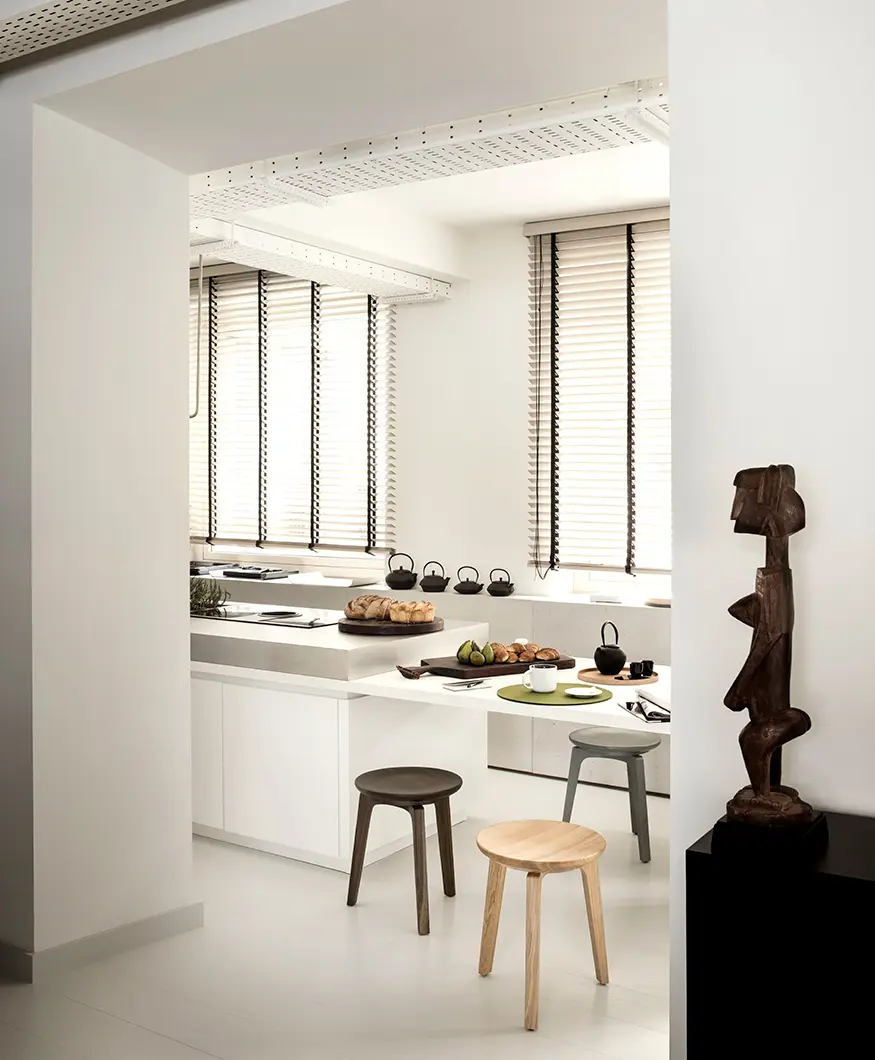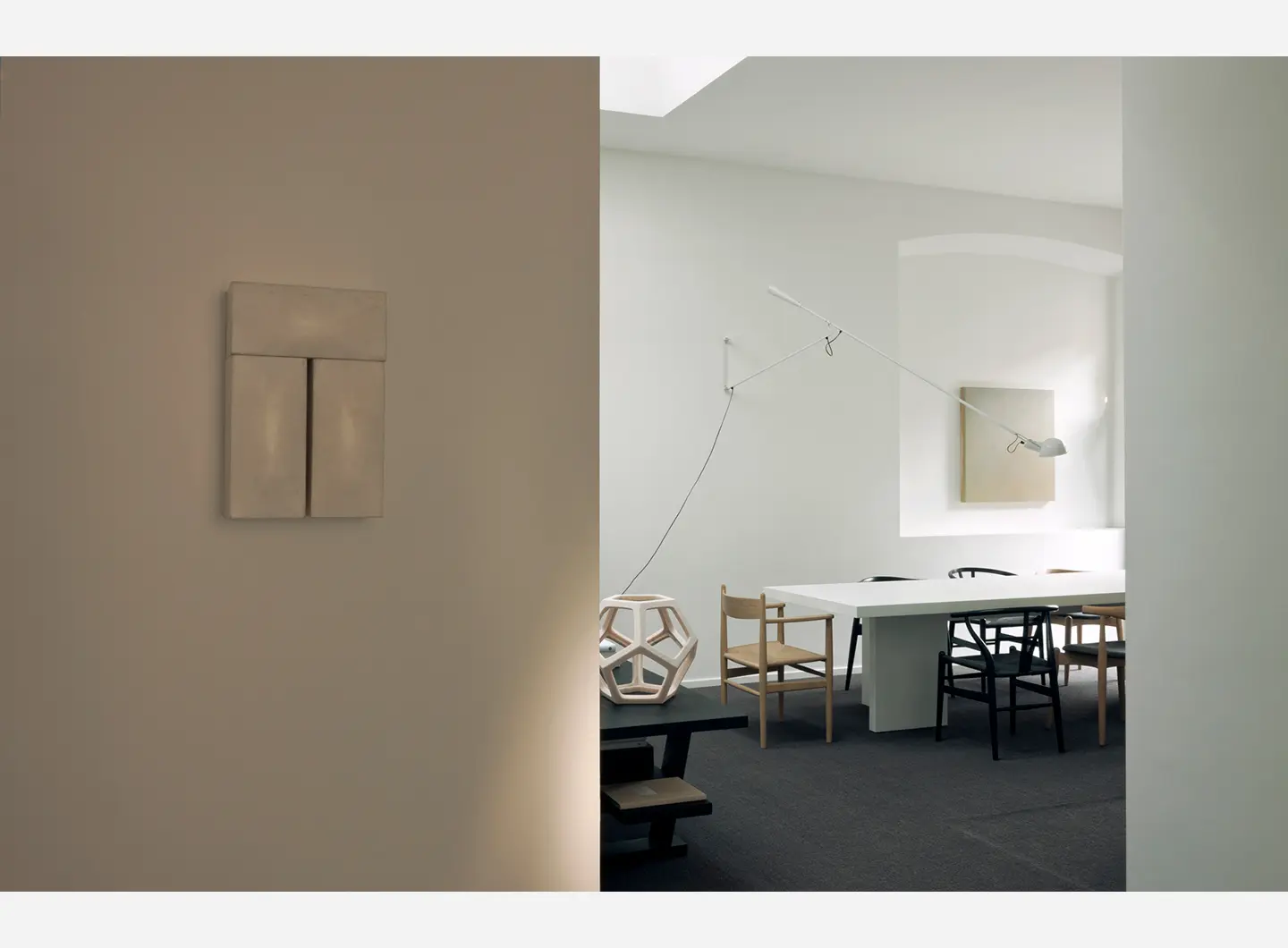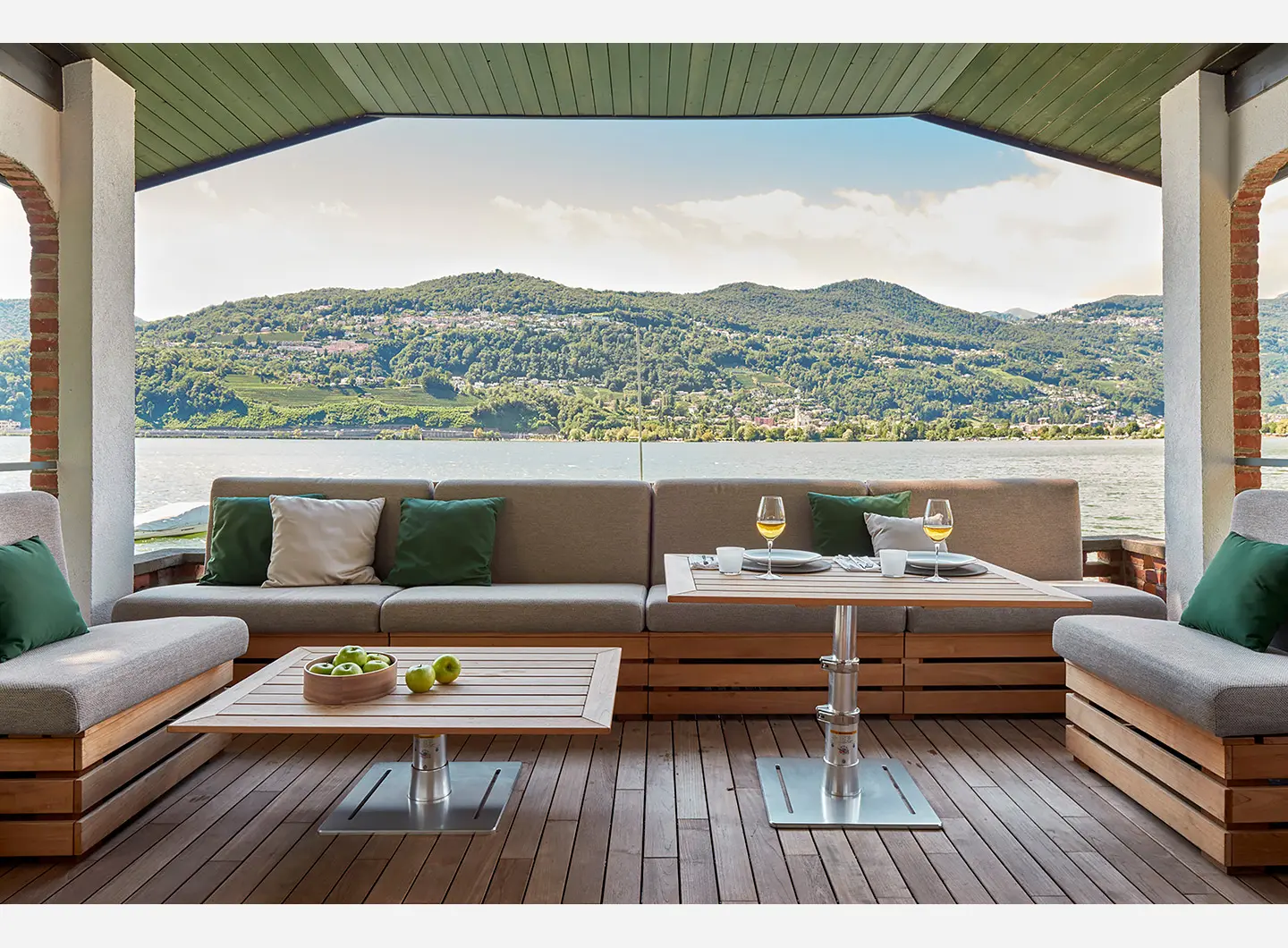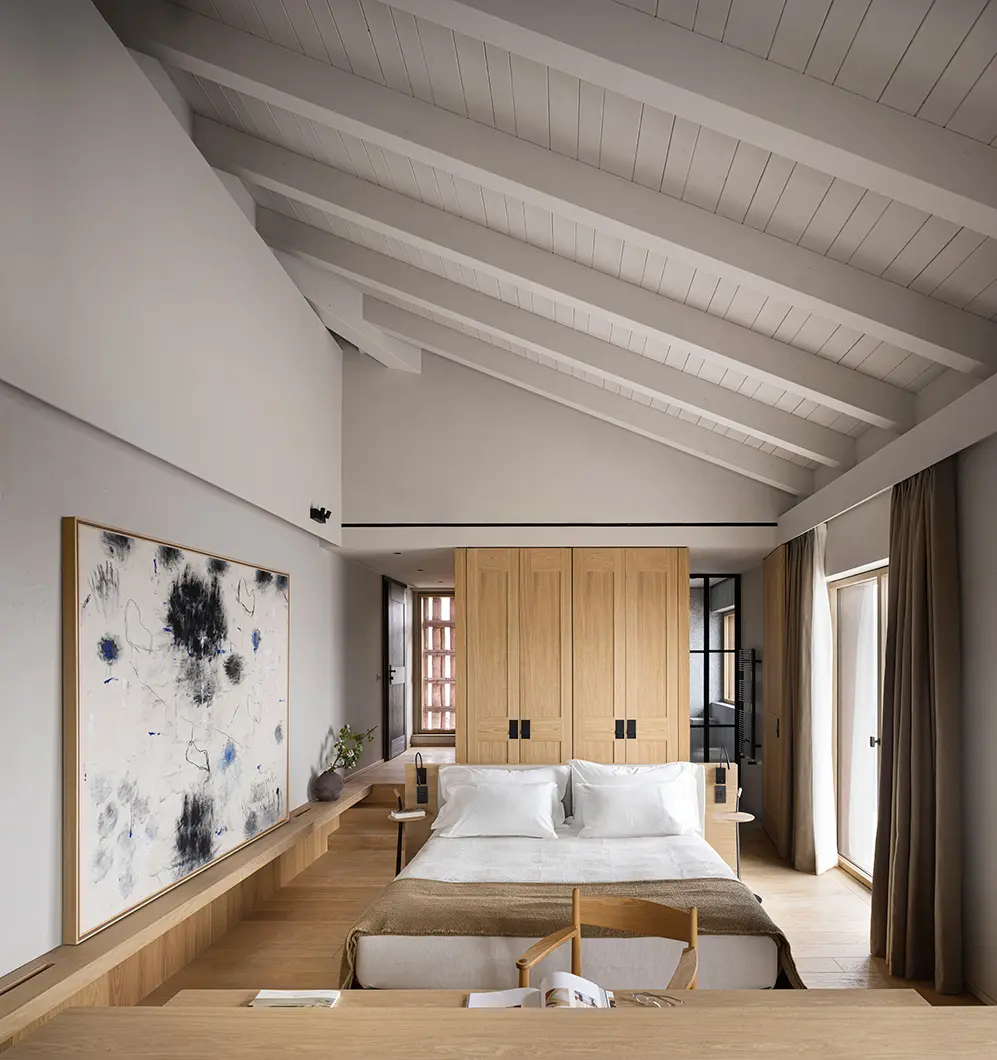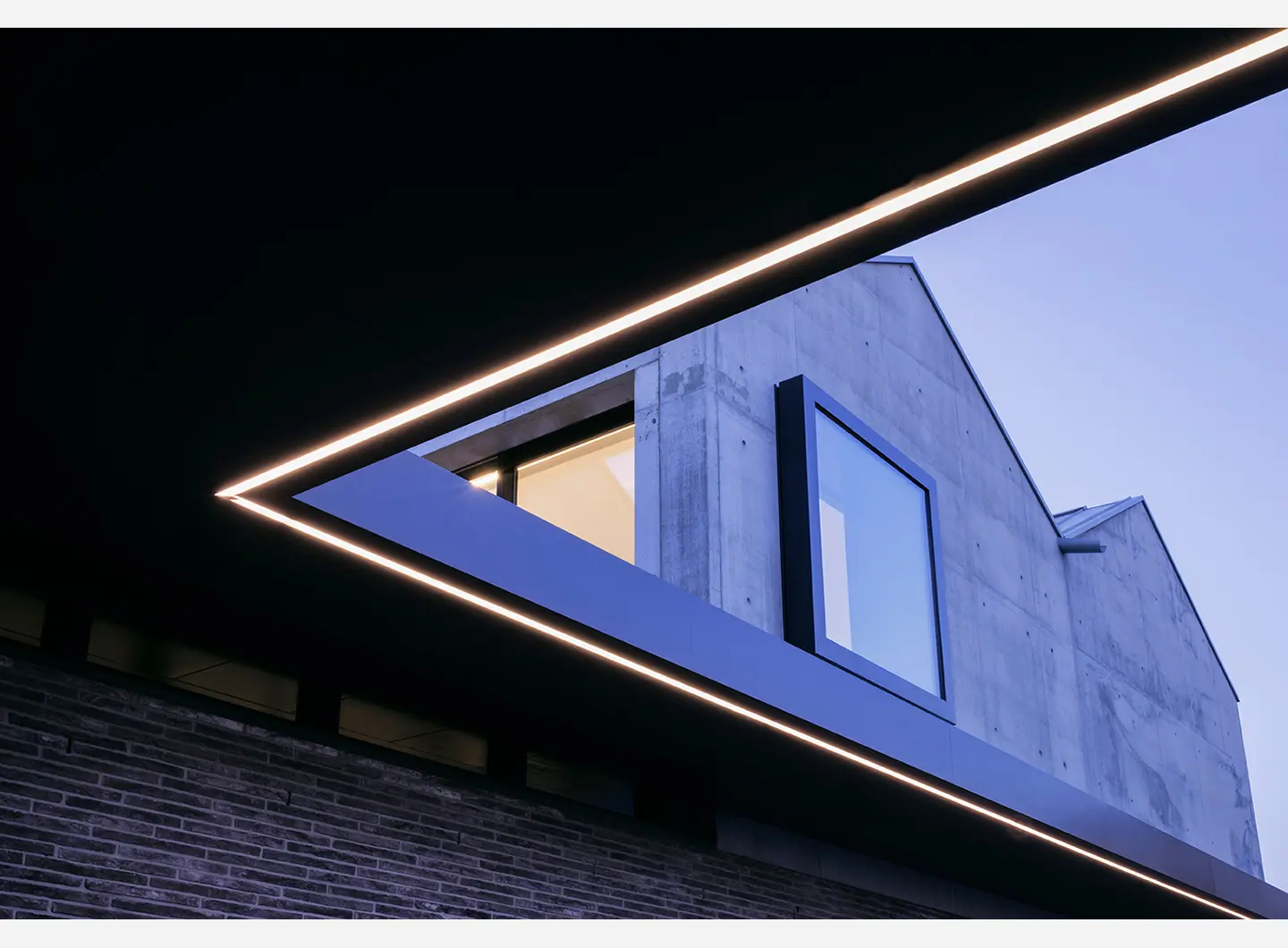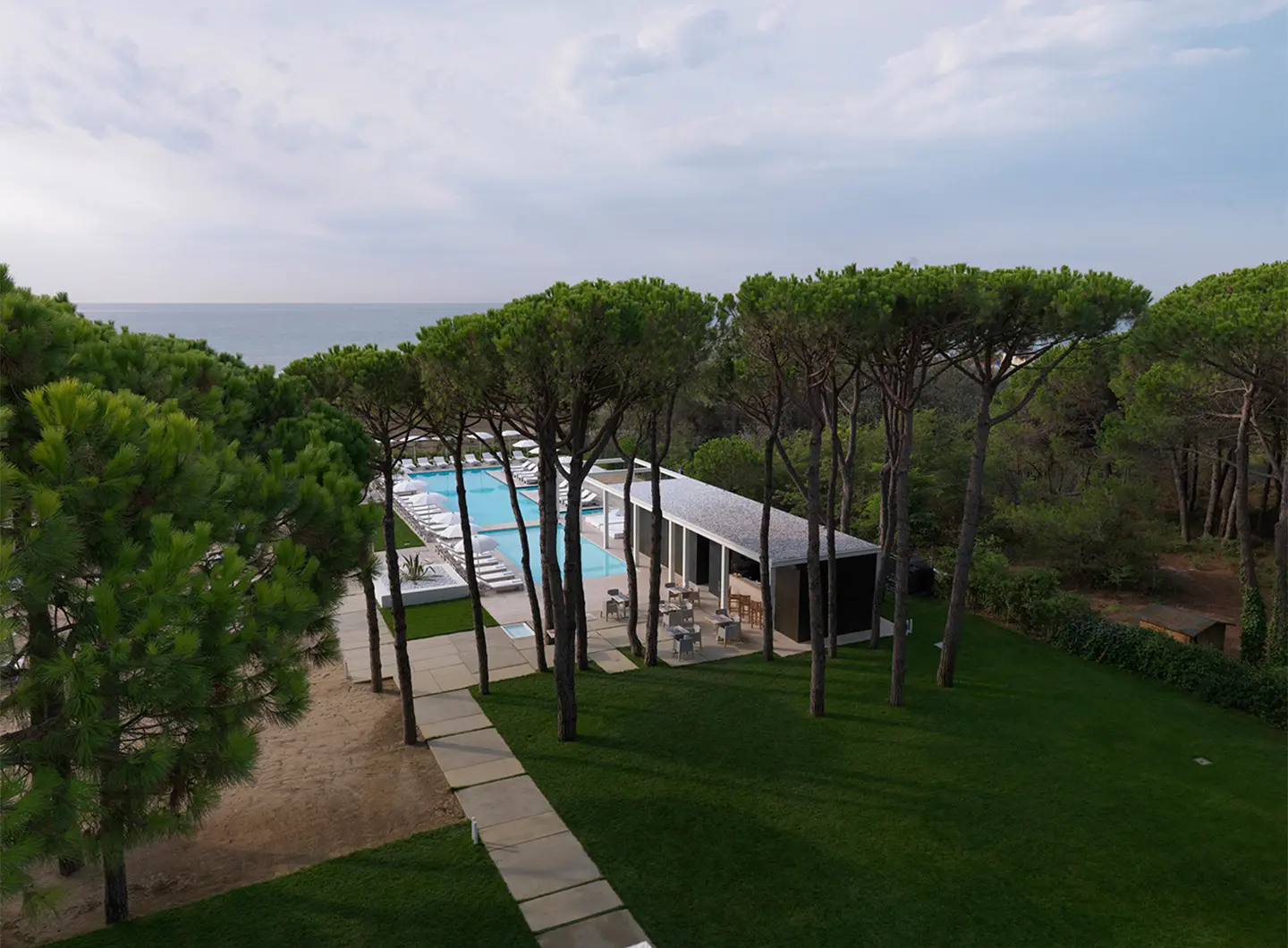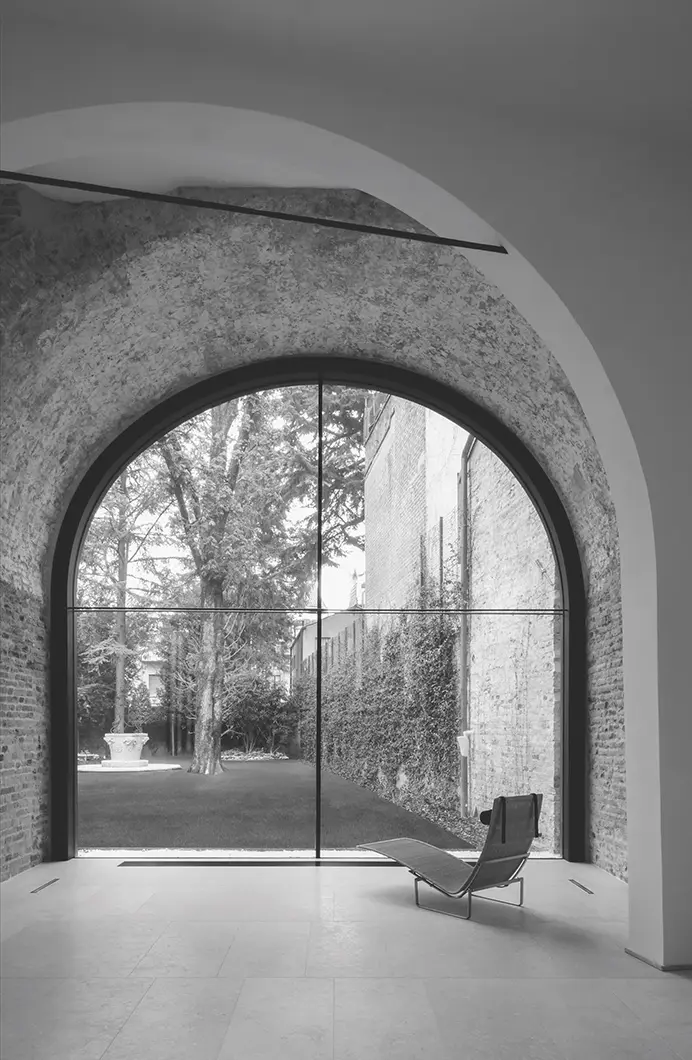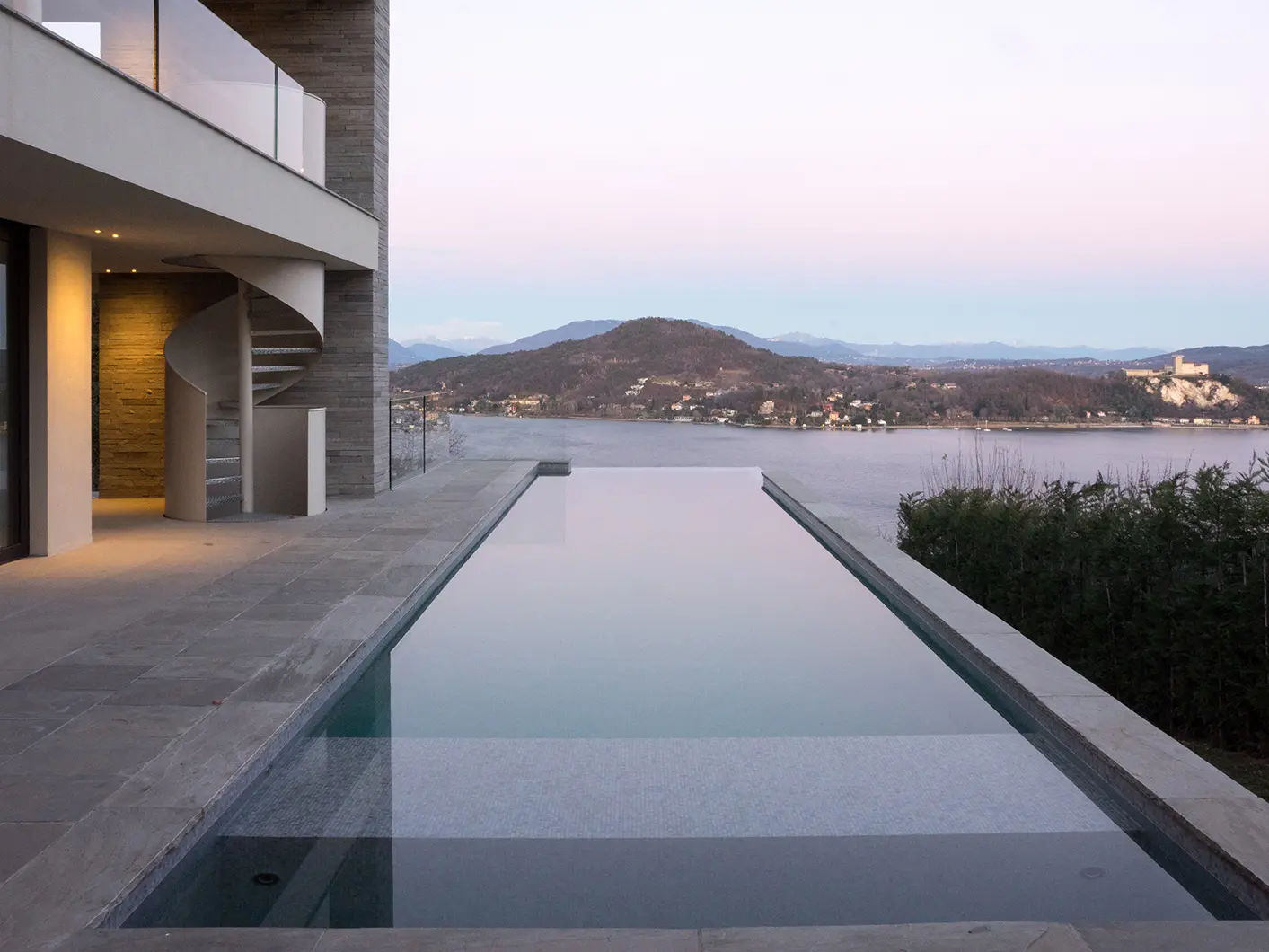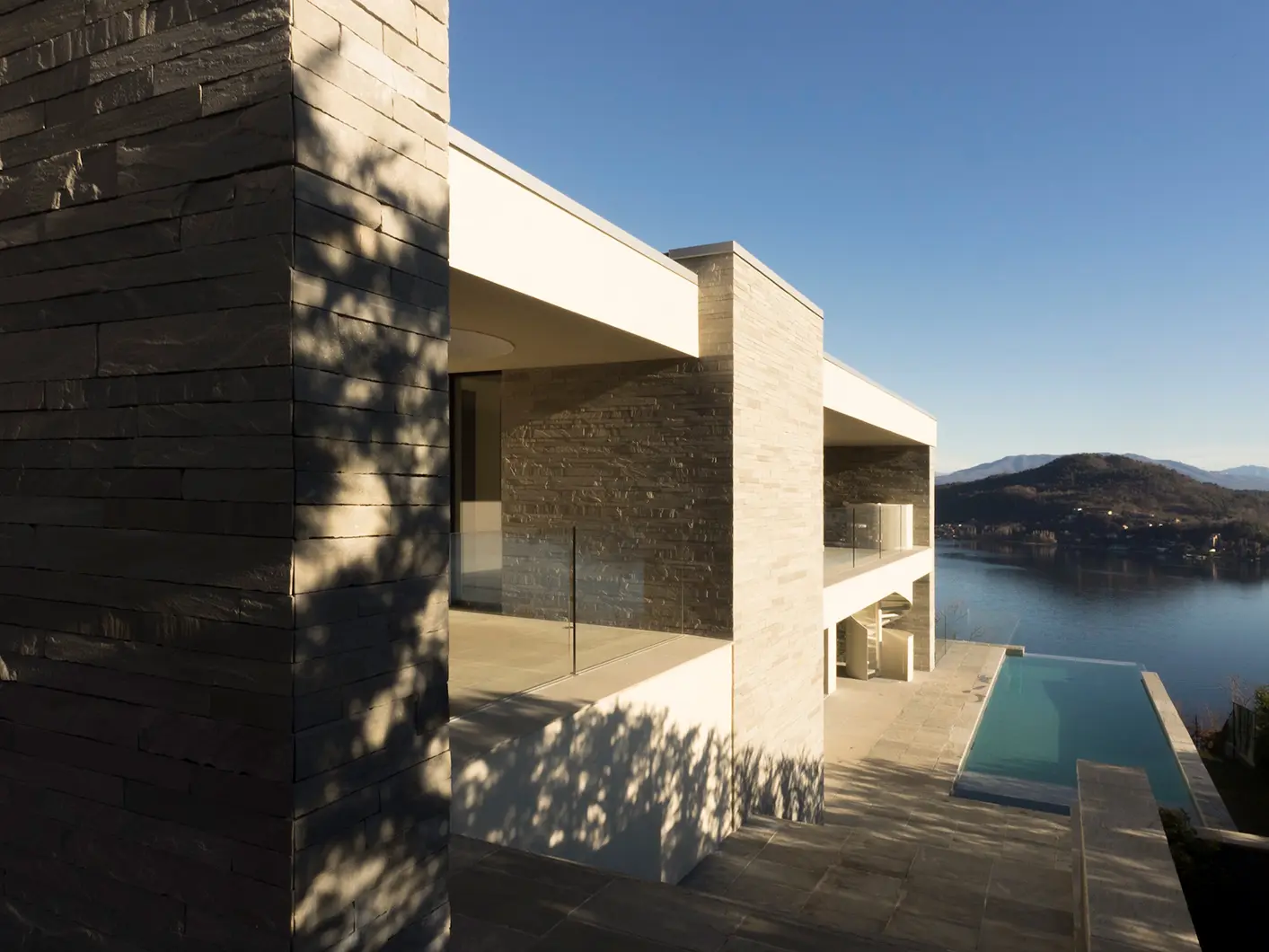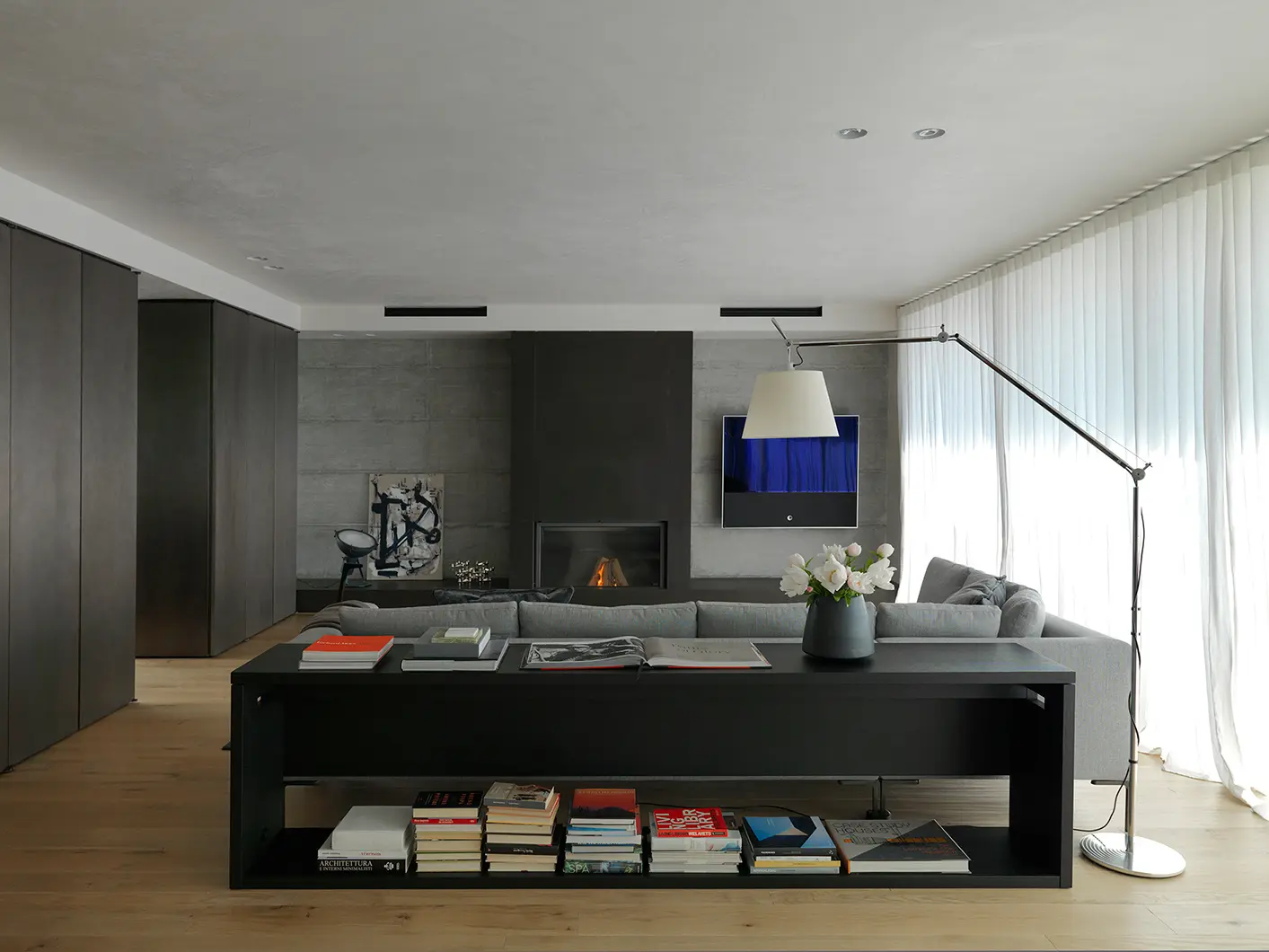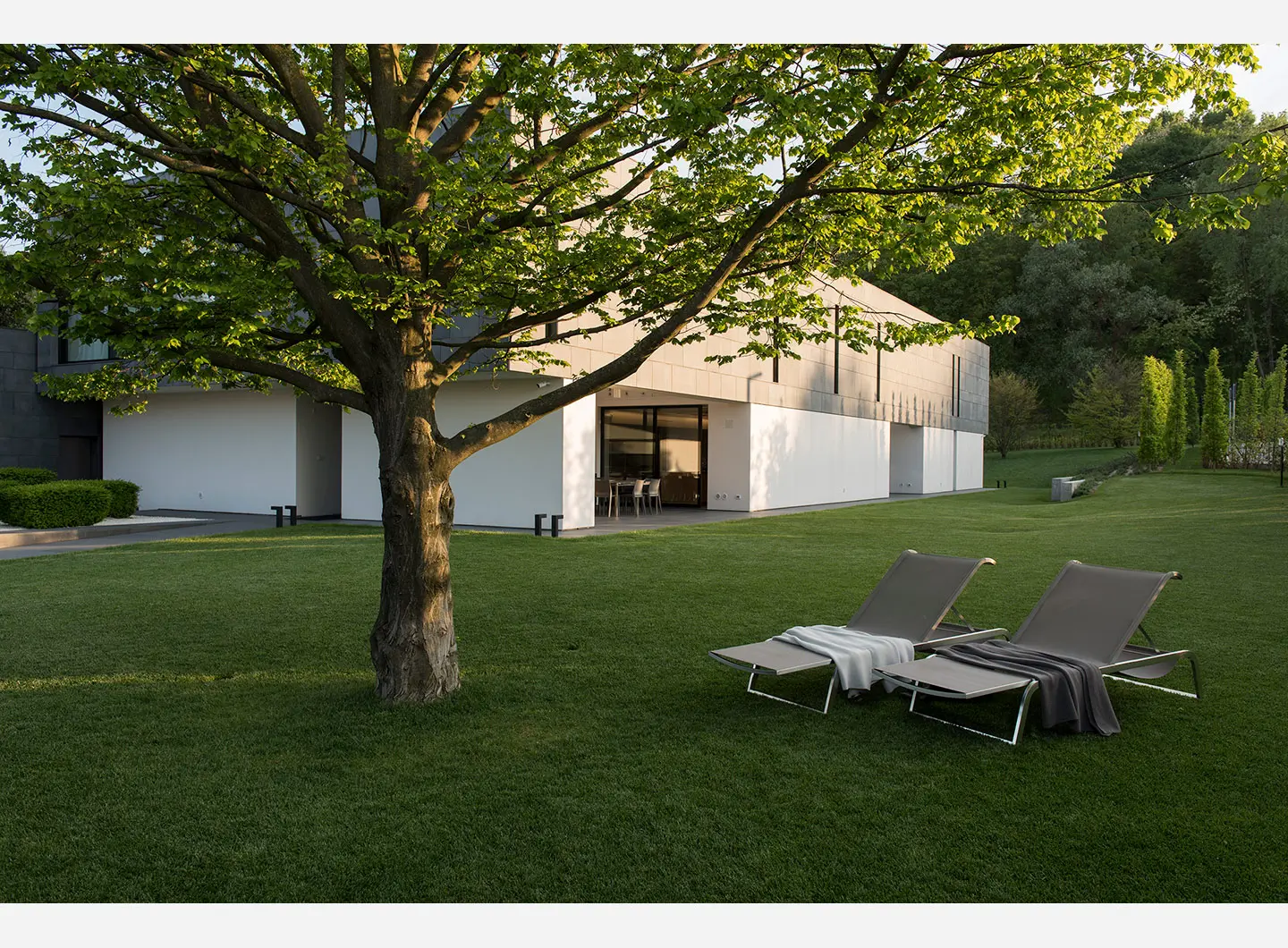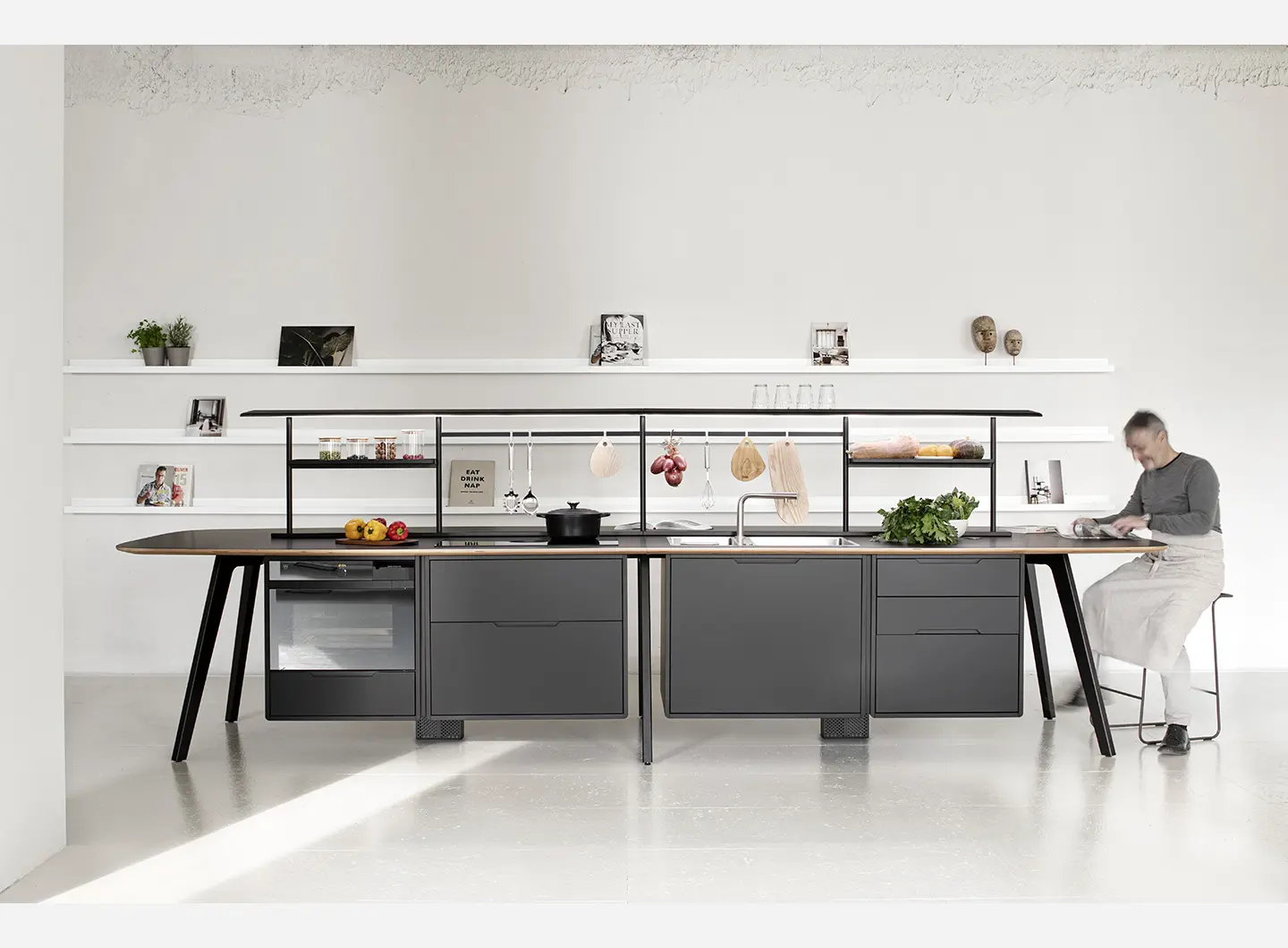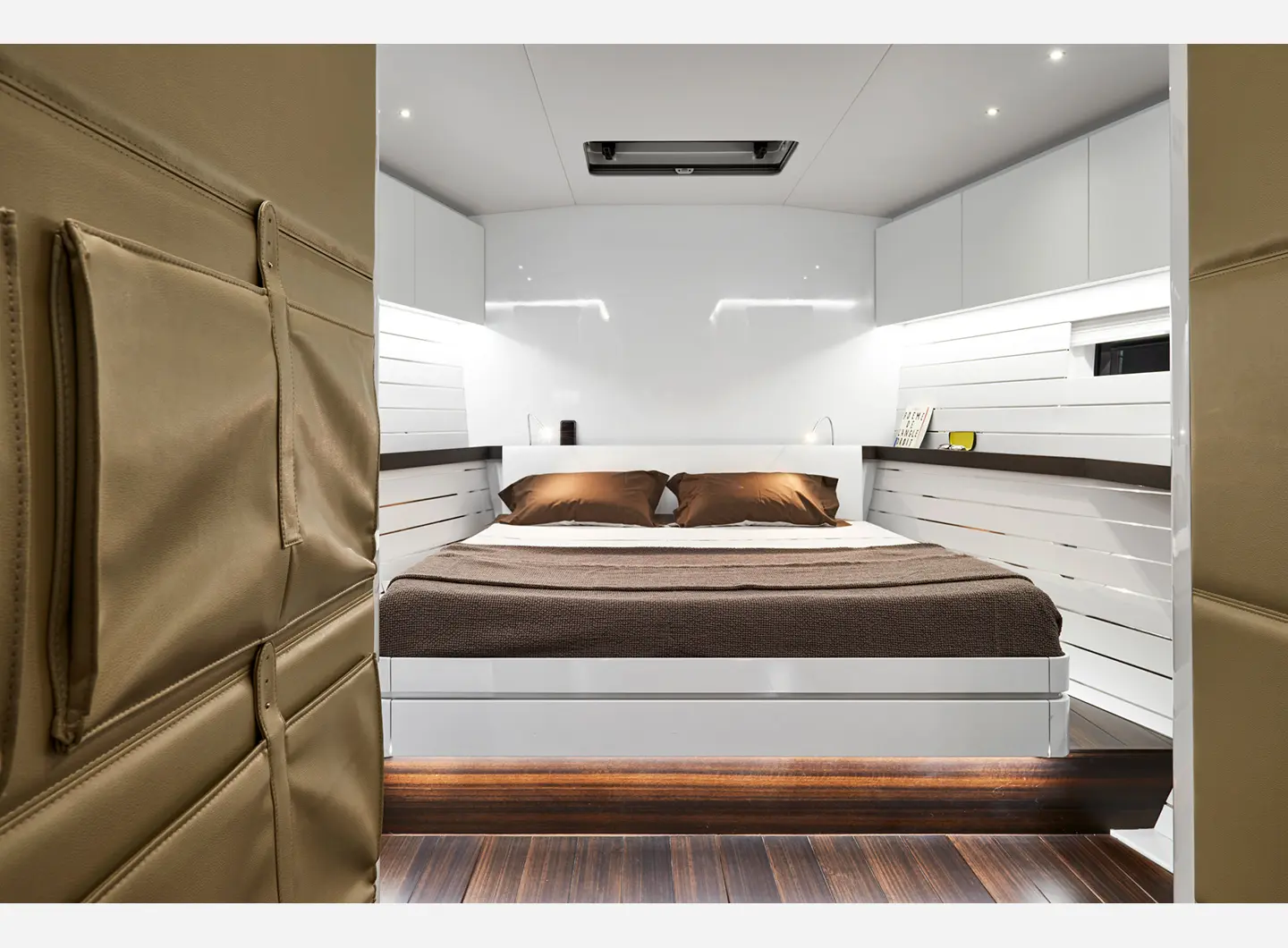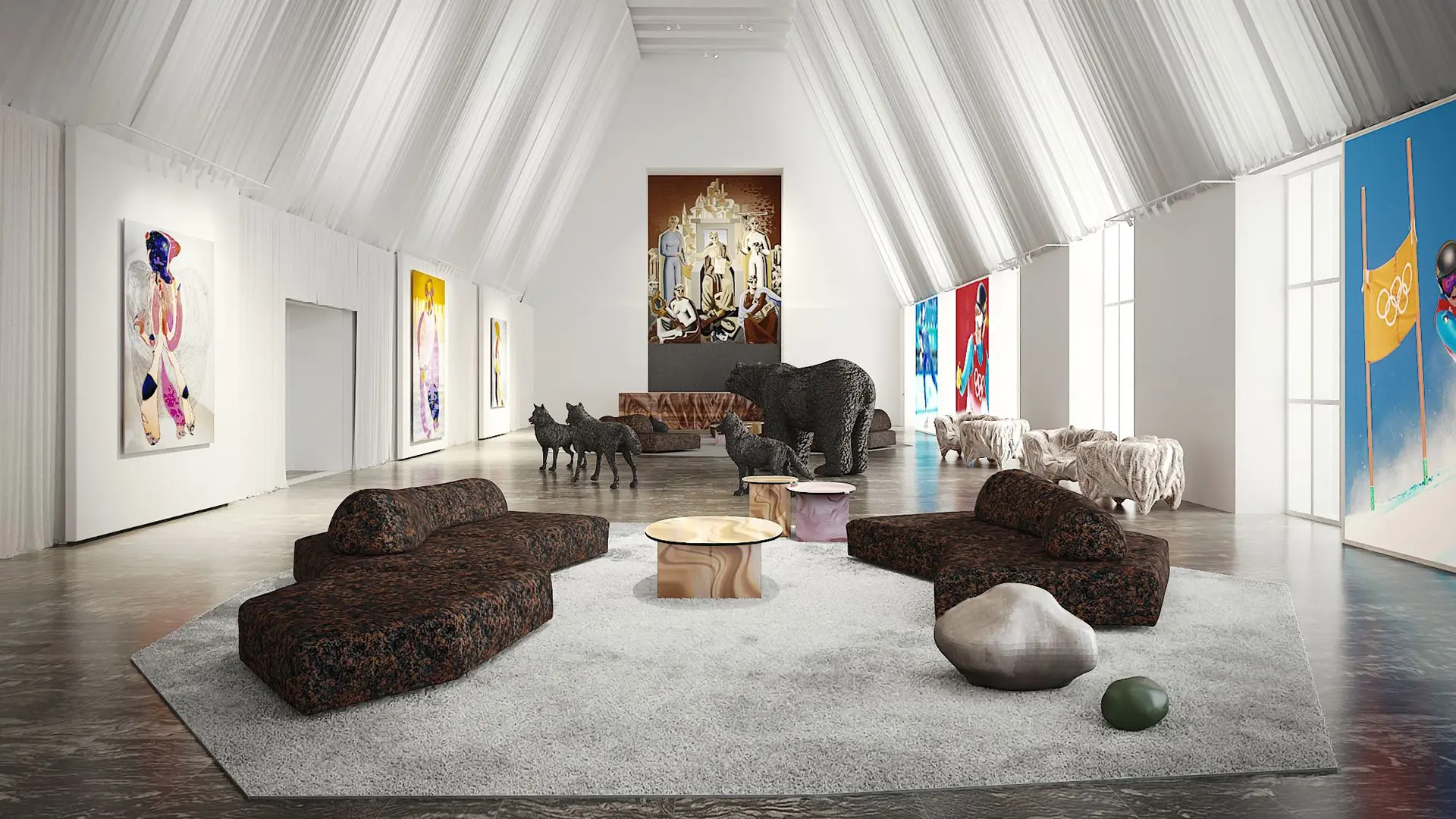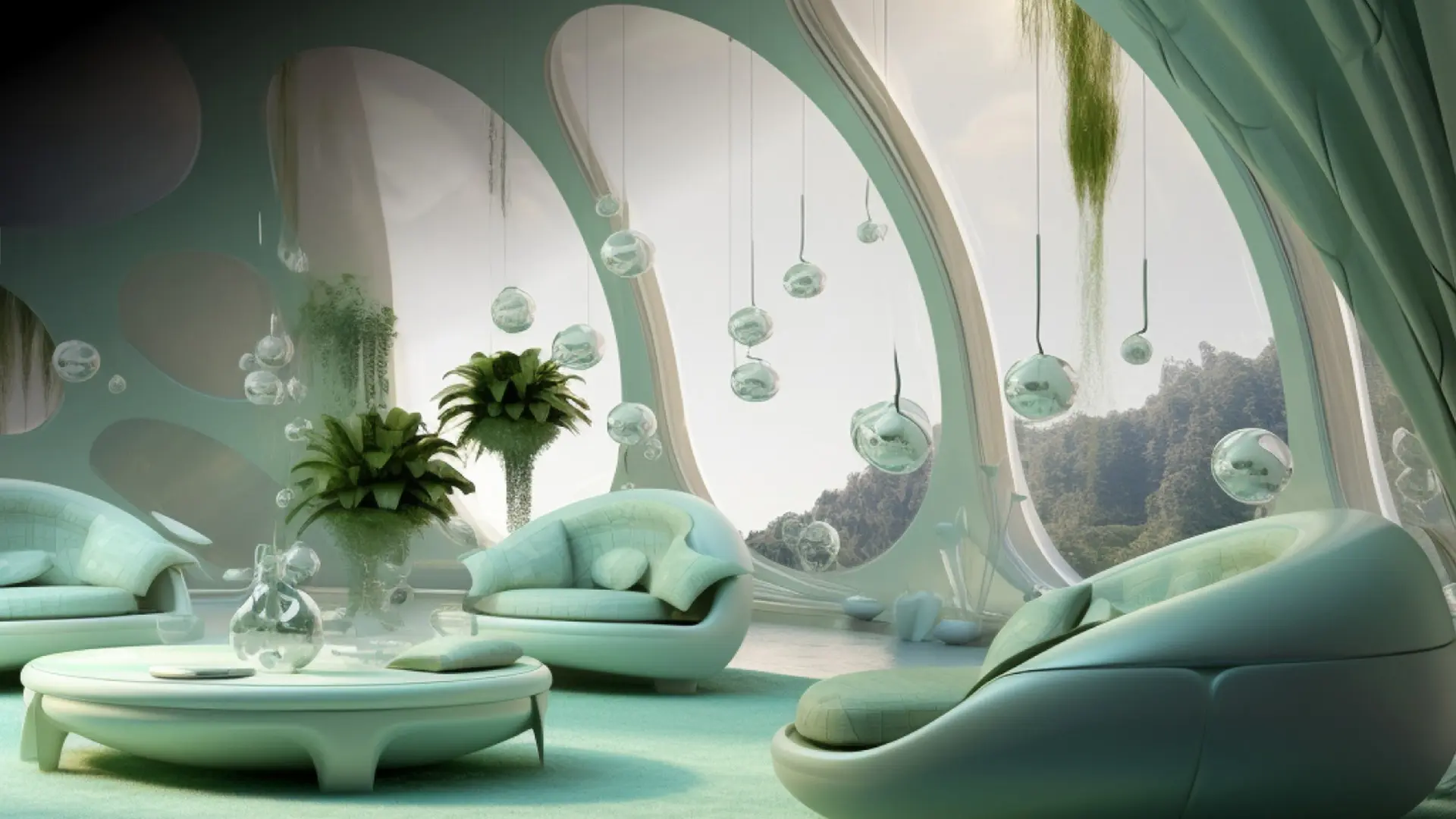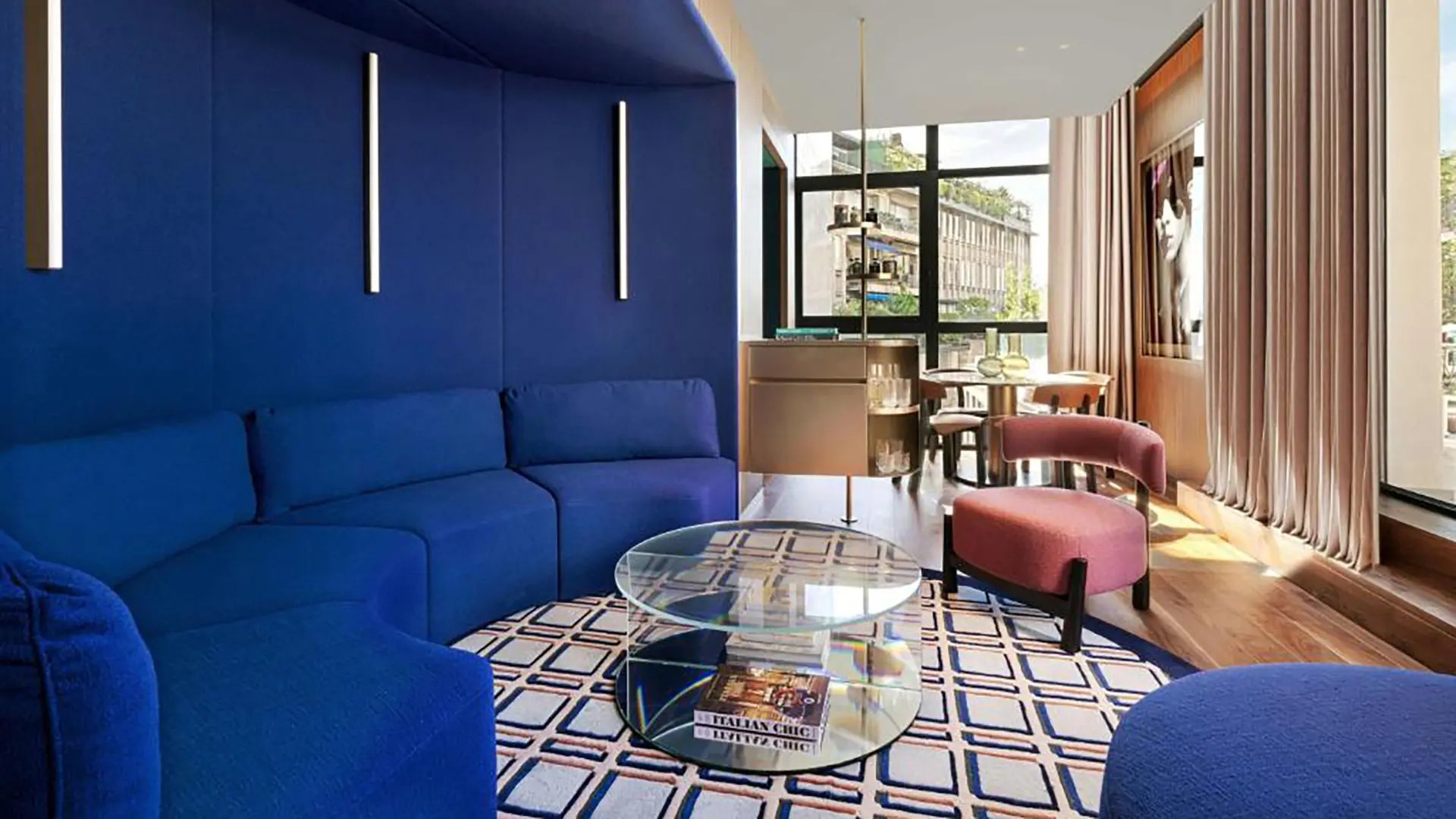A space devoted to an immersive experience where sport, culture, nature and design come together to express the essence of Italianness. During the XXV Olympic Winter Games, from 6 to 22 February 2026
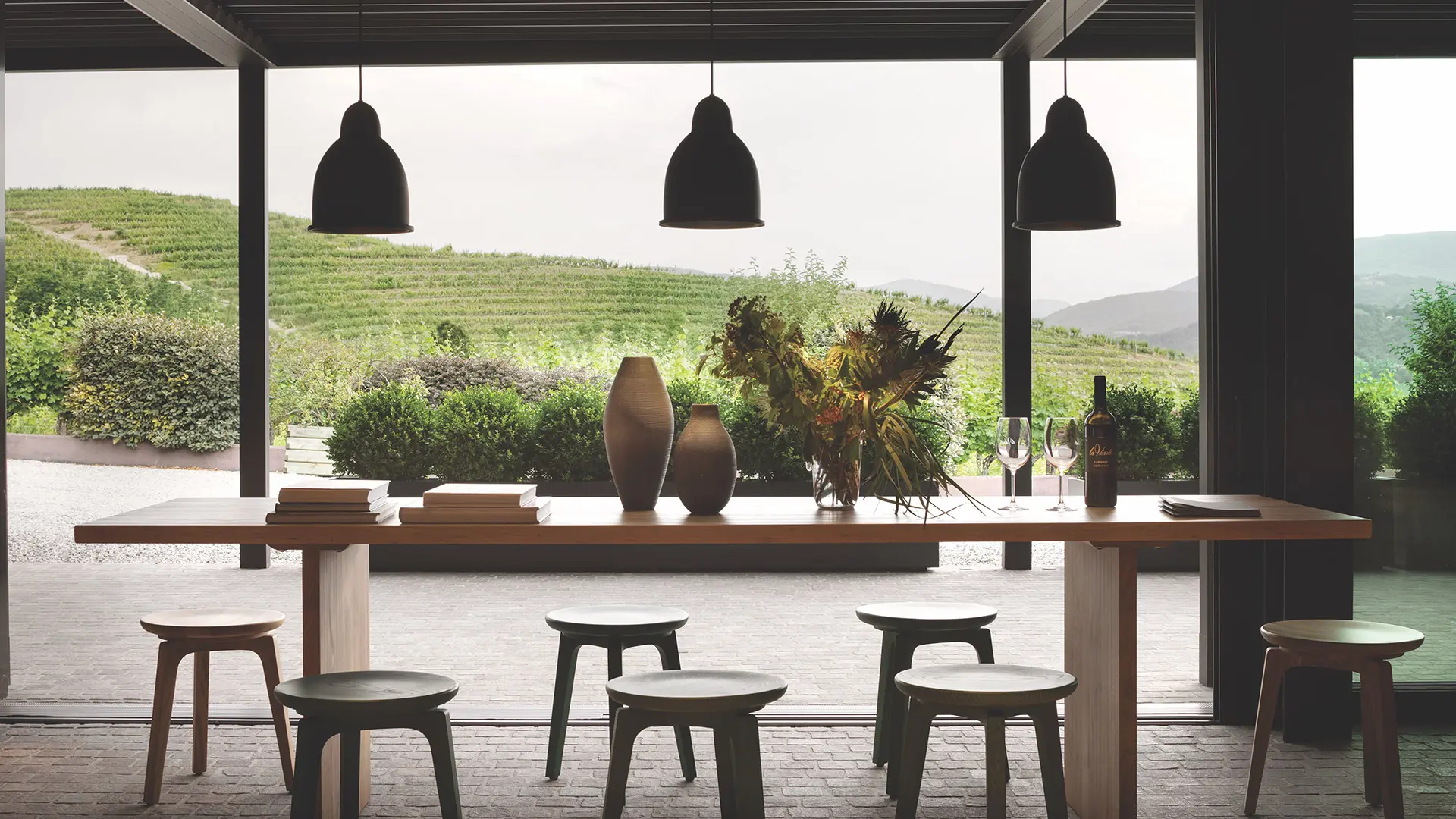
Cantina La Viarte, ph. Albero Strada
Ranging from yacht interiors, villas, lofts, wine cellars and much, much more, the projects undertaken by the studio set up in Padua in 1990 are sophisticated, extremely elegant, fresh and unfailingly contemporary thanks to extraordinary attention to detail and to materials.
Name: Aldo Parisotto, Massimo Formenton / co-founders of Parisotto+Formenton Architetti
Where do you work? We set up our studio in Padua in 1990, right in the centre, near Piazza dei Signori, and it was our historic headquarters for more than 30 years. We’re in Milan now too , with a team that also covers creative direction and communication and, as of 2018, with P+F BOX, our headquarters in Via Archimede, we’ve created a large, open-plan, flexible workspace, that reflects the multidisciplinary nature of our activities.
Your Instagram account: @parisottoformenton
Describe what your studio does: We deal with design in the round: from architecture to interiors, nautical interiors and product design in different design fields such as hospitality, residential, retail, sailing, exhibit design and art direction.
Where did you study? We both studied at IUEV University in Venice.
What are you working on right now?
AP: Right now, amongst other things, I am personally overseeing some interior nautical projects for the Mylius shipyards: we are working on sailing boats, motorboats and a catamaran. Yacht design is a sector that I’m directly involved in, I’m a yachtsman and shipowner myself, I combine my passion for the sea with my profession, leveraging my own on-board experience at the design stages, in a bid to bring together a contemporary style with the particular requirements of navigation.
MF: I have a particular predilection for private homes and am overseeing several projects at the moment. Designing a home for a private client is very tiring and full-on because you get to see their most intimate, most personal side. But in the end, after all that work, these projects can produce huge satisfaction that stays with you for a while.
Your dream project?
AP: I’ve always been fascinated by museography and I’m really passionate about art, which is our most fertile ground for research when we embark on a new project. My degree thesis was on museography and some of my earliest professional projects involved museum displays. Now, many years later, I’d really like to put my stamp on a design for an art space.
MF: I’ve always been attracted by the theatre world and by the film world in particular. I’ve been working for some time on drawing up some character and I really hope to make a film sometime; film isn’t so very different to architecture, it’s just a different way of expressing and triggering emotions.
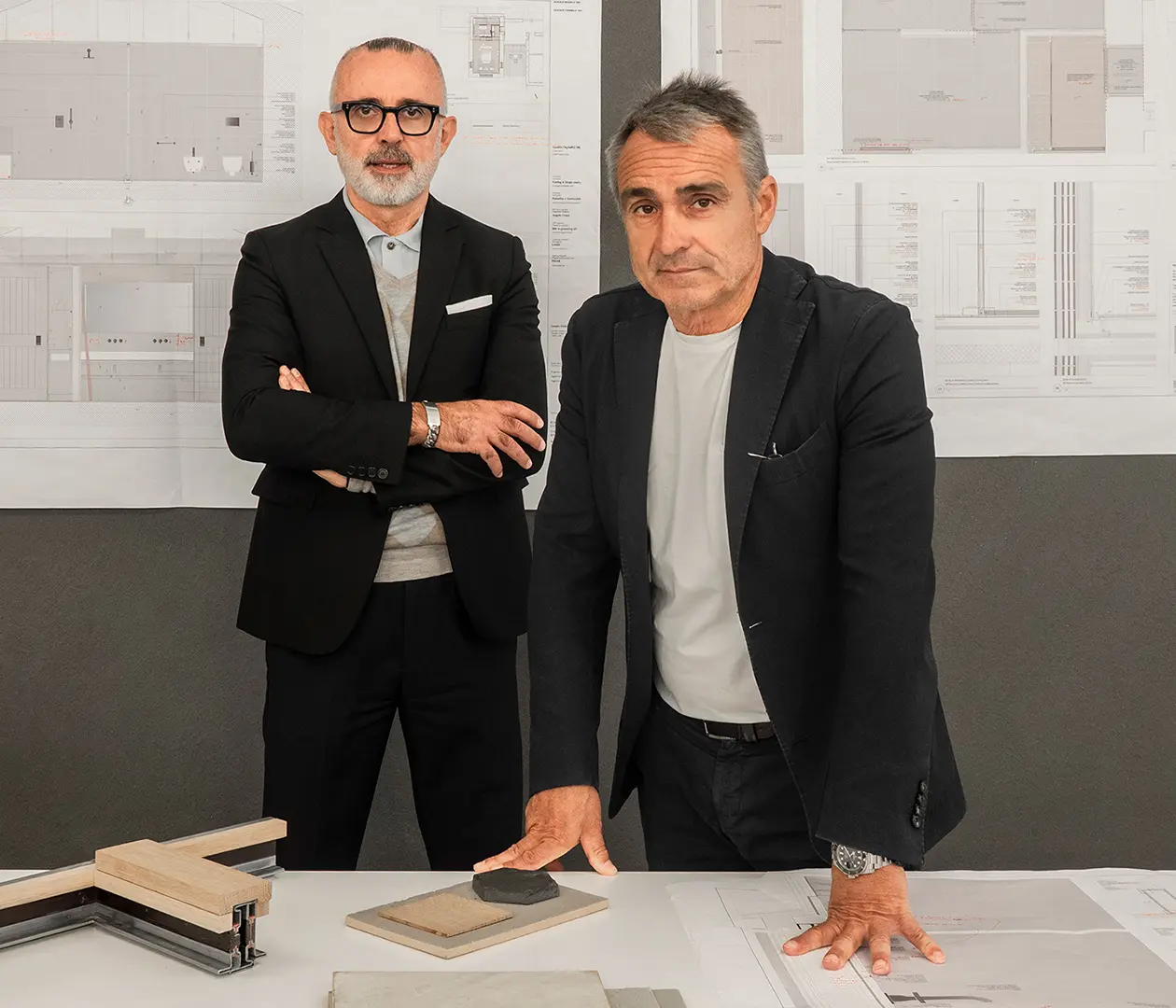
Massimo Formenton and Aldo Parisotto
The project that’s influenced you the most:
AP: A project that really struck me when I was a student and that is imprinted on my mind as an illuminating example of classic architectural composition, yet contemporary in its proportions and the extraordinary balance of solids and voids is Palladio’s Palazzo Chiericati in Vicenza.
MF: Le Corbusier’s work indubitably influenced me a lot, especially the Maisons Jaoul. I read his account of the project for this pair of houses and was thunderstruck. It made me really reflect on the concept of architectural design as a catalyst for the variables present in the reality and in the moment and the influence that all the actors involved, even the humblest member of the team, had on it.
A crucial detail in all your projects:
AP: Light. We love working with natural, overhead or filtered, “harnessing” it as a design tool. Light really is an architectural material, which works with the surfaces and the volumes, defining them, sculpting the material.
MF: The quest for beauty, not just in the aesthetic sense, but as representing the quality of the architectural project.
City centre or far-flung places?
Over the last two years we’ve seen an increase in requests for residential projects and we have noted that, compared with before the pandemic, our clients are increasingly going for peri-urban or sub-urban locations or even ones well outside larger cities: by lakes, in open countryside. After the powerful emotional and spatial compression of the last few years, there’s a huge desire – and sometimes need – for us to reconnect with slower rhythms and broader perspectives.
Something you have at home designed by you?
AP: Almost everything …
MF: My home is a workshop, it’s a testing ground for things that we will go on to create in our clients’ houses …
What gifts do you like giving?
AP: Books
MF: Books mostly, but also things for the home, lamps especially.
If you could build a secret passage in your house, where would it lead?
AP: To the sea or even right onto a boat
MF: Into my studio, a secret space, a “room just for me.” Every so often it pays to escape, have time to reflect and touch base with yourself.
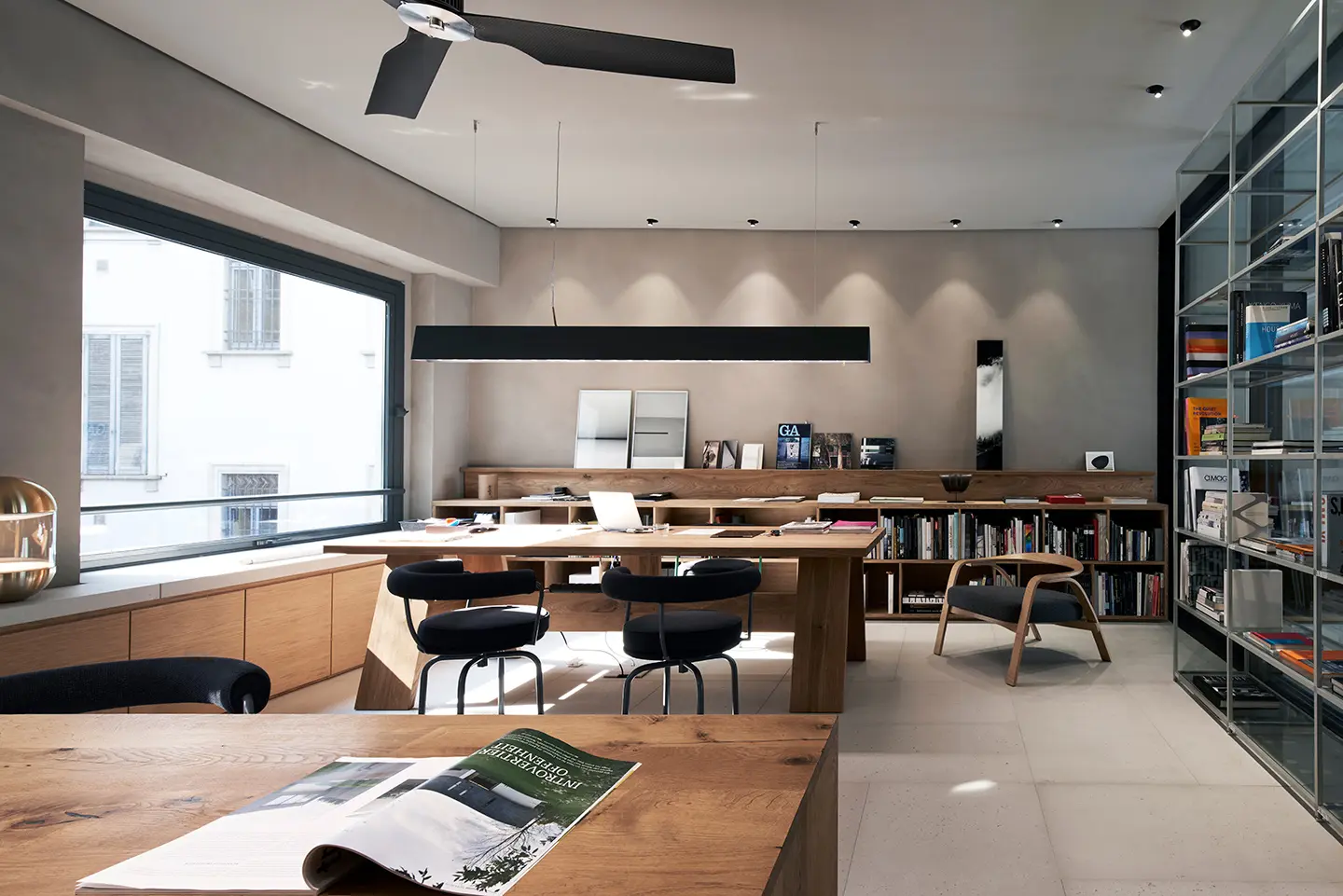
P+F BOX, Milano, ph. Leo Torri
What do you usually do on Sundays?
AP: During the regatta season I am often on the boat with my wife – she shares my passion and is an excellent yachtswoman – and my crew, ploughing through the waves. MF: Sundays are devoted to my family. I have two children of 9 and 12 and my wife and I always arrange things for us to do together: we visit cities, we go to exhibitions or perhaps just watch a film and then discuss it afterwards.
Your favourite place in Milan:
AP: I’ve been living in Milan for many years, in a largely professional dimension – on the few occasions I manage to stop, I relish the opportunity to winkle out the little gems that this city keeps well-hidden and off the beaten track: entrance halls to the palazzi, the hidden courtyards, the faint Roman remains discernible among the city centre buildings, the museum-houses … MF: I adore cities, the urban dimension … I like walking through the built environment, meeting people and watching people meet each other: I love the urban sociality. Milan is Milan, and has masses to offer from this perspective.
Studio Marcante Testa wants to ask you what music you listen to (Adelaide) and what trip you would like to take (Andrea):
AP: I don't listen to a particular genre, but the days in the studio are always accompanied by music and our collaborators have “tested” playlists that often help to tackle new projects.
MF: music gives emotions and permeates my life. Regarding gender, a lot depends on the thoughts, emotions or feelings I have at a given moment. For a time, for example, I listened to cultured music, simply because I had read the biographies of Beethoven and Rossini and was fascinated by them.
We both love to travel, our work has led us to travel a lot to many different places: New York, Los Angeles, Hawaii, Tokyo, Seoul, the whole Middle East and so on... now we would like to be able to travel with no work purpose, taking some time, without a precise destination, just to get to know the world.
Would you like to ask the next interviewee a question?
How would you define your job today?


 Exhibitions
Exhibitions
